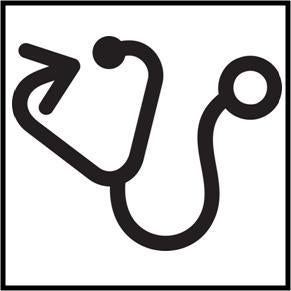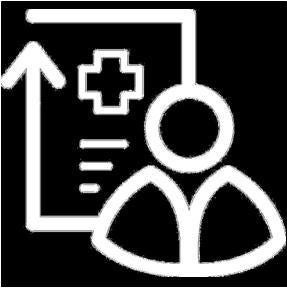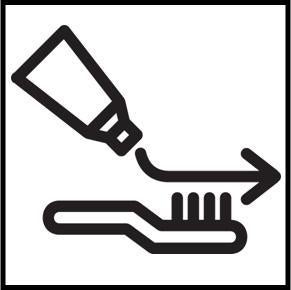Understanding the Impacts of Health Reform
Only a selection of the valuable information and resources produced by the below organizations is provided on this website. Please visit the websites listed on the right for more in-depth analysis of the health reform legislation.
Learn strategies and access resources to guide cities and counties in including health in policy and other leadership decisions on ILG’s Healthy Neighborhoods website.
Overview
On March 30, 2010, President Obama signed comprehensive health reform legislation, called the Patient Protection and Affordable Care Act of 2010 and the Health Care and Education Reconciliation Act of 2010. This page provides information regarding some of the key provisions related to children’s coverage that are included in the legislation.
While many of the implementation details have yet to be worked out, a few details are now known. These include four key areas of importance to local agencies working to improve access to affordable coverage for children and families:
- The status of the State Children’s Health Insurance (SCHIP) Program;
- Coverage of youth to age 26 on their parents’ insurance policy;
- Increased funding for community clinics; and
- Coverage for pre-existing conditions.
State Children’s Health Insurance Program
Coverage for children through the State Children’s Health Insurance Program (SCHIP) and Medicaid has been expanded, increasing the number of children eligible for these affordable coverage options. In California, the state’s no- and low-cost children’s health coverage programs, the Healthy Families Program and Medi-Cal, are partially funded by SCHIP and Medicaid.
The health reform law requires states to expand Medicaid coverage to all non-elderly individuals with incomes below 133 percent of the federal poverty level (currently $14,404 for an individual and $24,353 a year for a family of three) by January 1, 2014. In addition, states are required to maintain current income eligibility levels for children in Medicaid and the Children’s Health Insurance Program (CHIP) until 2019 and extend funding for CHIP through 2015. If CHIP-eligible children are unable to enroll due to enrollment caps, they will be eligible for tax credits in the state Exchanges. In California, Medi-Cal is the program that covers Medicaid eligible individuals, including children.
While severe budget constraints were threatening to limit the ability of California to provide the state funding match for 2010 that SCHIP and Medicaid programs require, recent reports from the Managed Risk Medical Insurance Board (MRMIB) have stated there are no enrollment limitations for the Healthy Families program this fiscal year – the program is fully funded. For updates on the budget impacts of Medi-Cal funding and benefit status contact your County Medi-Cal provider (click here for a listing of County Medi-Cal service offices).
Insurance Options for Children through Age 26
Children with a parent who has health insurance can remain on his or her parent’s health insurance plan through age 26. A young adult can qualify for coverage under the parent’s plan even if he or she no longer lives with the parent, is not a dependent on the parent’s tax return, or is no longer a student. Further, married and unmarried young adults can qualify for the dependent coverage extension, but coverage does not extend to their spouse or children. If young adults are not eligible for an employer-sponsored insurance plan, they may be eligible to qualify for the dependent coverage option through group health plans that were in place prior to March 23, 2010. However, in some cases, a young adult can choose to remain insured through a parent’s dependent coverage even if the young adult is eligible for other employer-sponsored coverage.
Although this dependent coverage extension option takes effect on September 23, 2010, some insurance providers are making this option available earlier in order to accommodate individuals who would otherwise lose coverage.
Additional coverage options exist for uninsured young adults who are not able to take advantage of the early enrollment offered by some insurers. Young adults under age 26 may be able to remain on a parent’s plan using the Consolidated Omnibus Budget Reconciliation Act (COBRA), they may be able to buy coverage in the non-group market, or they may qualify for the temporary high-risk pools created by the health reform law if they have a pre-existing condition and have been uninsured for six months or more. COBRA gives employees and their families the right to choose to continue group health benefits provided by their group health plan for limited periods of time under certain circumstances such as job loss, reduction in the hours worked, transition between jobs, death, divorce, and other life events.
Community Health Centers and Clinics
Increased funding for community health centers and school-based health centers is included in the health reform package to accommodate expansion of operational capacity. A total of $11 billion in new funding will be distributed over five years to community clinics, with $9.5 billion of this funding supporting health centers in expanding and enhancing their health services. The first round of funding applications may be out as soon as early summer 2010, with award dates dependent on congressional appropriations timelines.
Pre-existing Conditions
Individuals with pre-existing conditions are eligible for immediate access to insurance through funding for temporary high-risk pools. These pools are to be established no later than June 21, 2010 and terminate on January 1, 2014 when the American Health Benefit Exchanges are established. Individuals who have a pre-existing medical condition and have not had creditable coverage for the previous six months are eligible for enrollment in the high-risk coverage pools. Plans must cover at least 65 percent of health care costs, with premiums allowed to vary by age, geographic area, and family composition. Yearly out-of-pocket costs (excluding premiums) are limited to $5,950 for individuals and $11,900 for families.
Additional Information Resources
Detailed information and analyses about the impacts of national health care reform are available from a variety of sources.
Health Reform Impacts on Children’s Coverage Options
- The Kaiser Family Foundation:
- The House Committees on Ways and Means, Energy and Commerce, and Education and Labor:
- The California Legislative Analyst’s Office- The Patient Protection and Affordable Care Act: An Overview of Its Potential Impact on State Health Programs.
- The Insure the Uninsured Project’s report on the impacts of the Patient Protection and Affordable Care Ace on the uninsured in California- California’s Uninsured and Insured: Changes Under Federal Reform.
- The Robert Wood Johnson Foundation policy brief discusses the mandates that go into effect in 2010 and 2011- Near Term Changes in Health Insurance.
- The California State Association of Counties fact sheets outline the major provisions of health reform that are applicable to counties. The Medicaid & Children’s Health Insurance Program Fact Sheet highlights some of the important CHIP and Medicaid provisions.
- The Issue Brief on Medicaid and Children’s Health Insurance Provisions by the Kaiser Family Foundation (KFF) includes useful information. In addition, KFF has published an issue brief outlining Medicaid’s role in health reform, titled Explaining Health Care Reform: Questions About Medicaid’s Role.
Coverage for Children Through Age 26
- Kaiser Family Foundation issue brief provides information about dependent coverage expansion for children- Explaining Health Care Reform: Questions About the Extension of Dependent Coverage to Age 26.
Funding for Community Clinics
- The National Association of Community Health Centers (NACHC) provides a Summary of Key Health Center Provisions, as well as an overview of frequently asked questions – Health Reform FAQs for Health Centers. The NACHC also provides a table that categorizes Health Center Related Provision in Health Reform Legislation by provision and funding allocation.
Temporary High Risk Coverage Pool
- The Insure the Uninsured Project provides an outline of the essential elements of the health reform legislation that apply to the implementation of the Temporary High-Risk Pool Program- Implementing Health Reform: Temporary High-Risk Pool.
- The Kaiser Family Foundation provides a briefing paper containing FAQ’s on the high risk coverage pool- Explaining Health Reform: Questions About the Temporary High-Risk Pool.
Health reform and the impact to America’s cities and towns
- The National League of Cities, with generous support from the ICMA-Retirement Corporation (RC), hosted a webcast to help America’s cities and towns understand their responsibilities around health care reform. The webcast featured expert speakers, including former Senator Thomas Daschle. Click here to view the webcast.
Expanding Medicaid to Low-Income Childless Adults
- The Kaiser Family Foundation provides a report, based on interviews with officials in seven states and the District of Columbia and national experts, on lessons learned from past state experience covering childless adults through waiver and state-funded programs and profiles the programs included in the study- Expanding Medicaid to Low-Income Childless Adults Under Health Reform: Key Lessons From State Experiences.
A PDF of “Understanding the Impacts of Federal Health Reform: Overview of Key Provisions Related to Children” is available at right under Related Links.







